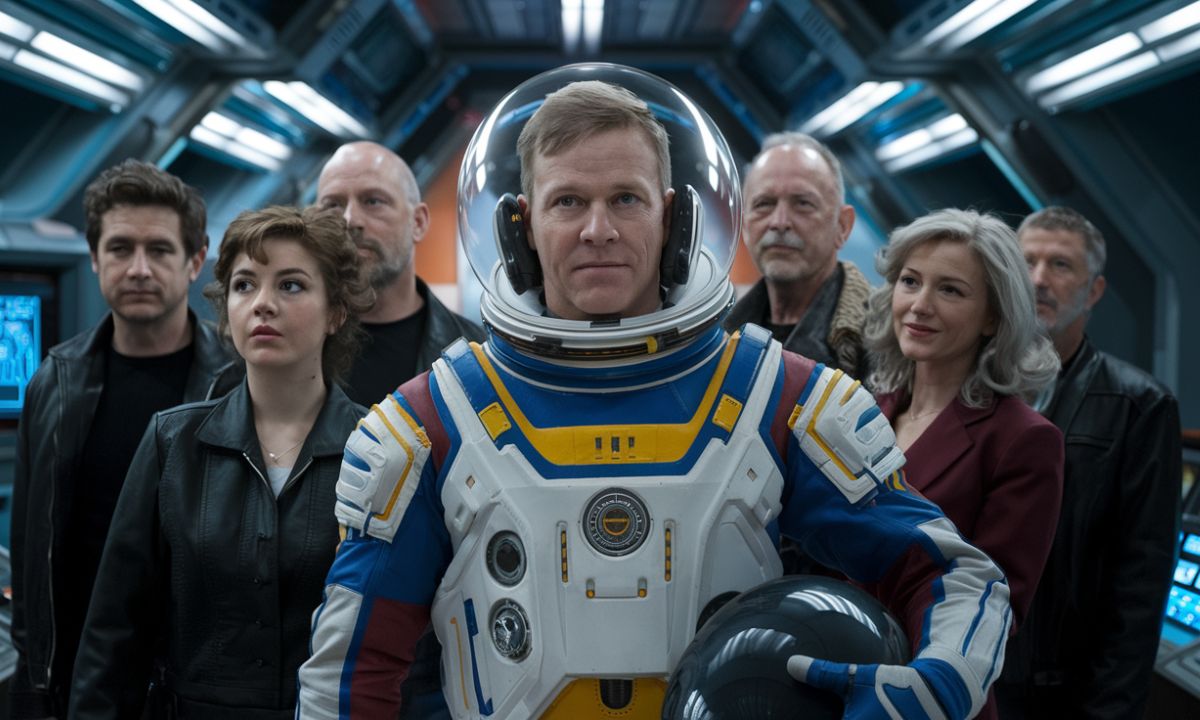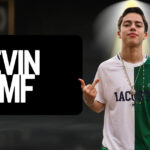In the ever-evolving landscape of science fiction cinema, few upcoming releases have generated as much anticipation as Mickey 17.
Directed by the visionary Oscar-winning filmmaker Bong Joon-ho, this adaptation of Edward Ashton’s novel promises to deliver a unique blend of philosophical depth and visual spectacle.
With Robert Pattinson in the lead role and a premise that challenges our understanding of identity and existence, Mickey 17 is positioning itself as one of the most thought-provoking sci-fi films in recent years.
Let’s dive deep into what makes this project so special and why movie enthusiasts around the United States are eagerly awaiting its arrival.
The Original Novel: “Mickey7” by Edward Ashton
Edward Ashton’s novel “Mickey7” serves as the foundation for Mickey 17, though the title change itself hints at Bong’s unique interpretation of the source material. Published in 2022, the novel quickly captured the attention of sci-fi enthusiasts with its fresh take on the expendable clone concept.
The story revolves around Mickey Barnes, an “Expendable” – a disposable employee sent on a human colonization mission to the ice world Niflheim. When an Expendable dies, a new body is regenerated with most of the previous memories intact. After Mickey’s seventh iteration dies on a mission, he surprisingly returns to find that Mickey8 has already been created, setting up an existential crisis as two versions of the same person must navigate their shared yet distinct identities.
“I died again yesterday. That makes seven times so far, which isn’t as bad as it sounds when you consider the circumstances.” – Opening line from Edward Ashton’s novel
Ashton’s work stands out in contemporary sci-fi literature for its darkly humorous tone while exploring profound questions about consciousness, the value of human life, and the ethical implications of advanced cloning technology. The novel brilliantly balances philosophical inquiry with adventure elements, making it ideal source material for Bong’s cinematic sensibilities.
Bong Joon-ho’s Vision for Mickey 17
Following his historic Oscar wins for Parasite, Bong Joon-ho’s selection of Mickey 17 as his next project speaks volumes about the material’s potential. Known for seamlessly blending genres while delivering incisive social commentary, Bong’s approach to adapting the novel has been characterized by his signature attention to both visual storytelling and thematic depth.
Bong’s filmography reveals a director fascinated by class struggles, as seen in Snowpiercer, and the complex relationship between humans and other species, as explored in “Okja.” Mickey 17 allows him to continue these explorations while venturing further into questions of what defines human identity when it can be replicated.
In interviews, Bong has described his vision for Mickey 17 as “expanding on the novel’s universe while remaining faithful to its core philosophical questions.” His collaboration with cinematographer Darius Khondji (who previously worked on “Parasite”) promises stunning visuals that will bring the alien world of Niflheim to life with the same meticulous attention to detail that characterized his previous works.
The production design team has created elaborate sets representing the colony base and the harsh environment of Niflheim, combining practical effects with cutting-edge CGI to realize Bong’s vision. Early production photos reveal a visual aesthetic that balances gritty realism with futuristic elements, avoiding the sterile look often associated with sci-fi films.
The Star-Studded Cast of Mickey 17
At the center of Mickey 17 is Robert Pattinson, whose career trajectory from teen heartthrob to one of the most daring actors of his generation makes him perfectly suited for the complex role of Mickey. Pattinson’s performances in films like “The Lighthouse,” “Good Time,” and most recently “The Batman” demonstrate his ability to portray psychological complexity and existential angst – qualities essential for a character who must confront multiple versions of himself.
The supporting cast is equally impressive:
| Actor | Role | Notable Previous Work |
| Toni Collette | Mission Commander | Hereditary, The Sixth Sense |
| Mark Ruffalo | Senior Engineer | Spotlight, The Avengers series |
| Steven Yeun | Fellow Colonist | Minari, Nope |
| Naomi Ackie | Medical Officer | Star Wars: The Rise of Skywalker |
This ensemble brings together veterans of both indie cinema and blockbuster franchises, reflecting Bong’s unique position as a filmmaker who bridges art house sensibilities with mainstream appeal. The chemistry between Pattinson and his co-stars will be crucial in grounding the high-concept premise in emotional reality.
Particularly interesting is the casting of Steven Yeun, who previously collaborated with Bong on “Okja.” Their reunion in Mickey 17 suggests Bong’s appreciation for actors who understand his distinctive approach to character development and tonal shifts.
The Fascinating Concept of Expendables in Mickey 17
At the heart of Mickey 17 lies the concept of “Expendables” – humans who have volunteered to serve as disposable workers for dangerous missions, with their consciousness and memories transferred to new bodies upon death. This premise opens up a wealth of philosophical questions that the film explores:
- What constitutes individual identity when memories can be transferred?
- Does each new Mickey constitute a new person or a continuation of the same?
- What ethical responsibilities exist toward beings created for disposability?
- How does society value lives deemed “expendable”?
The meaning of being an Expendable in Mickey 17 serves as both literal plot device and rich metaphor. In Ashton’s novel, Expendables represent an extension of exploitative labor practices, where certain individuals are deemed more disposable than others – a theme that resonates with Bong’s previous explorations of class issues in films like Parasite and Snowpiercer.
Bong’s adaptation appears to expand on these themes, using the science fiction premise to comment on contemporary issues of labor rights, the valuation of human life, and the potential future implications of advanced biotech. Early Mickey 17 reviews from test screenings have specifically praised how the film maintains the novel’s philosophical depth while adding Bong’s signature visual storytelling.
Production Journey of Mickey 17
The path from announcement to screen for Mickey 17 reflects the ambitious nature of the project. Warner Bros. acquired the rights to Ashton’s novel in early 2022, with Bong quickly attached as director and Pattinson announced as the lead shortly thereafter. Principal photography began in London’s Leavesden Studios in August 2023, with additional location shooting in Iceland standing in for the frozen landscapes of Niflheim.
The production faced several challenges:
- Budget management: Creating multiple versions of Mickey required innovative special effects solutions
- COVID protocols: Though diminished from earlier pandemic productions, safety measures still affected scheduling
- Technical challenges: Capturing Pattinson interacting with himself as different Mickey iterations required precise planning
Despite these obstacles, the production maintained Bong’s reputation for efficiency, wrapping principal photography in February 2024. Post-production work, including extensive visual effects, continued through summer 2024.
The estimated budget of $100 million places Mickey 17 in the mid-range for contemporary sci-fi films – substantial enough for impressive visuals but not so enormous as to force creative compromises for commercial appeal. This budget range has previously yielded thought-provoking sci-fi successes like “Arrival” and “Blade Runner 2049.”
Visual Effects and World-Building in Mickey 17
The creation of Niflheim represents one of the most significant visual challenges for Mickey 17. Described in Ashton’s novel as an ice planet with unexpected dangers lurking beneath its frozen surface, the film’s version combines Iceland’s natural landscapes with elaborate set extensions and CGI enhancements.
The visual effects team, led by veterans from films like “Dune” and “Interstellar,” has developed new techniques for portraying the various iterations of Mickey. Rather than relying solely on digital doubles, the production employed a combination of practical effects, body doubles, and digital enhancements to create scenes where multiple versions of Pattinson’s character interact.
Early footage from the Mickey 17 trailer showcases these technical achievements, demonstrating how the film maintains a tangible, physical quality despite its futuristic setting. The colony base features a lived-in aesthetic reminiscent of classic sci-fi films like “Alien,” contrasting with the pristine, clinical areas where new Expendable bodies are generated.
The design of technology in the film strikes a balance between fantastical and believable, with the regeneration chambers for creating new Mickeys serving as a central visual motif. These chambers combine organic and mechanical elements, reflecting the film’s themes about the intersection of biology and technology.
Mickey 17’s Place in Modern Sci-Fi Cinema
Mickey 17 enters a sci-fi landscape that has increasingly embraced philosophical depth alongside spectacle. Recent successes like “Arrival,” “Ex Machina,” and “Blade Runner 2049” have demonstrated audience appetite for science fiction that poses challenging questions while delivering visual innovation.
What sets Mickey 17 apart is Bong’s unique sensibility – his ability to blend humor with horror, social commentary with suspense, all while maintaining emotional resonance. While comparisons to films like “Moon” (which also dealt with clones and identity) are inevitable, Bong’s distinct voice promises a fresh perspective on familiar themes.
The film also represents a significant moment in the evolution of sci-fi as a vessel for auteur filmmaking. Following the success of Denis Villeneuve’s “Dune” adaptation, Mickey 17 continues the trend of visionary directors bringing their distinctive styles to science fiction worlds, elevating the genre’s artistic potential.
Release Strategy and Marketing for Mickey 17
Warner Bros. has positioned Mickey 17 as a prestigious release with both commercial appeal and awards potential. Following a pattern similar to Villeneuve’s “Dune,” the film is scheduled for a fall 2025 release, placing it in prime position for both box office success and awards consideration.
The marketing campaign has been carefully orchestrated, beginning with enigmatic teaser images released on social media featuring multiple shadowy figures of Pattinson with the tagline “How many Mickeys does it take?” The first Mickey 17 trailer, released in June 2024, strategically revealed just enough of the premise to intrigue audiences without spoiling major plot developments.
Based on early buzz, theater chains across the United States are preparing for significant demand. Mickey 17 showtimes are expected to be announced three months before release, with premium format screenings in IMAX and Dolby Cinema likely to sell out quickly in major markets.
The film’s marketing has wisely leveraged Bong’s Oscar-winning status alongside Pattinson’s star power, with promotional materials emphasizing the “From the visionary director of Parasite” connection. This strategy aims to attract both dedicated sci-fi fans and the broader arthouse audience that embraced Bong’s previous work.
Case Study: Bong Joon-ho’s Path to Mickey 17
Bong Joon-ho’s journey to directing Mickey 17 represents a fascinating case study in how international filmmakers can successfully navigate Hollywood while maintaining their distinctive voices.
Beginning with Korean-language films like “Memories of Murder” and “The Host,” Bong established himself as a master of genre-bending storytelling. His first English-language film, Snowpiercer, demonstrated his ability to work with Hollywood stars while maintaining his thematic concerns and visual style.
After returning to Korean cinema with “Okja” and Parasite, the latter’s unprecedented Oscar success opened new doors. Rather than immediately pursuing a big-budget blockbuster, Bong chose Mickey 17 – a project that allows him to work with a substantial budget while exploring complex ideas that align with his artistic sensibilities.
This trajectory illustrates a potential path for filmmakers to maintain integrity while accessing Hollywood resources, potentially influencing how studios approach relationships with international auteurs.
What Fans of the Novel Can Expect from the Mickey 17 Film
Readers of Ashton’s novel have been carefully tracking how Bong’s adaptation might differ from the source material. Based on production information and early screenings, several key differences have emerged:
- Expanded scope: The film appears to develop the colony setting more extensively than the novel, with greater emphasis on the social dynamics among colonists.
- Visual manifestation of memory transfer: While the novel describes the process of consciousness transfer between bodies, the film visualizes this process through innovative sequences that blend subjective and objective perspectives.
- Enhanced role for supporting characters: The characters played by Toni Collette and Mark Ruffalo have reportedly been expanded from their novel counterparts, providing additional dimensions to the story.
- Title change: The shift from “Mickey7” to Mickey 17 suggests the film may extend the narrative further than the novel, possibly implying Mickey goes through more iterations or that the story continues beyond the novel’s conclusion.
Despite these changes, early reactions indicate the adaptation remains faithful to the core philosophical questions and dark humor that made the book compelling. Fans of the novel appear cautiously optimistic that Bong has captured the essence of the story while enhancing it through cinematic language.
Mickey 17’s Connection to Films Like Brave and Other Sci-Fi Classics
While Mickey 17 charts new territory in many ways, it also connects to a rich tradition of sci-fi storytelling. The film’s exploration of identity and duplicate selves recalls classics like “Blade Runner,” while its isolated colony setting evokes the claustrophobic tension of “Alien.”
Interestingly, there are thematic parallels with less obvious predecessors like Pixar’s Brave. Though wildly different in tone and target audience, both stories explore questions of fate, choice, and unintended consequences of technology/magic. This connection illustrates how Mickey 17 potentially bridges high-concept sci-fi with more accessible emotional storytelling.
Other films in conversation with Mickey 17 include:
- Moon (2009): Exploration of clones and isolation
- The Island (2005): Examination of disposable humans
- Primer (2004): Multiple versions of the same person
- Never Let Me Go (2010): Human clones created for utilitarian purposes
By building on these traditions while adding Bong’s unique perspective, Mickey 17 positions itself as both an innovation and a continuation of sci-fi cinema’s ongoing philosophical inquiry.
Conclusion: Why Mickey 17 Matters
As we await the release of Mickey 17, its significance extends beyond mere entertainment value. The film represents a convergence of several important cultural and cinematic trends:
- The growing global influence of Korean cinema, with Bong Joon-ho at the forefront
- Hollywood’s increasing willingness to invest in philosophically complex science fiction
- Robert Pattinson’s continuing evolution as one of his generation’s most daring actors
- The exploration of timely questions about identity, labor, and the ethics of emerging technologies
Perhaps most importantly, Mickey 17 exemplifies cinema’s unique ability to examine profound questions through imaginative storytelling. By creating a world where human consciousness can be transferred between bodies, Bong invites us to reconsider what makes us who we are – a question as old as philosophy itself, rendered fresh through the lens of science fiction.
Whether Mickey 17 achieves the same cultural impact as Parasite remains to be seen, but its ambition and the talent involved suggest a film that will spark conversation long after the credits roll. For sci-fi fans, film aficionados, and anyone interested in thoughtful explorations of what it means to be human, Mickey 17 promises to be one of the most compelling cinematic events of the coming year.
FAQs About Mickey 17
Is Mickey 17 based on a book? Yes, Mickey 17 is based on the science fiction novel “Mickey7” by Edward Ashton, published in 2022. The title change from Mickey7 to Mickey 17 suggests Bong Joon-ho’s adaptation may expand on the original story.
Who stars in Mickey 17? Robert Pattinson leads the cast as Mickey, with supporting roles from acclaimed actors including Toni Collette, Mark Ruffalo, Steven Yeun, and Naomi Ackie.
When will Mickey 17 be released? Mickey 17 is scheduled for theatrical release in fall 2025. Specific Mickey 17 showtimes will be announced approximately three months before the release date.
What is an Expendable in Mickey 17? An Expendable is a human who has volunteered to have their consciousness transferred to a new body upon death, making them ideal for dangerous colonial missions. The meaning behind this concept explores themes of disposable labor and the value of human life.
How does Mickey 17 connect to Bong Joon-ho’s other films? Like Parasite and Snowpiercer, Mickey 17 examines class dynamics and social hierarchies. The film continues Bong’s interest in how society treats marginalized individuals, though in a science fiction context.
Has the Mickey 17 trailer been released? Yes, the first official Mickey 17 trailer was released in June 2024, giving audiences a glimpse of Robert Pattinson as multiple versions of Mickey and showcasing the film’s visual style.
Will there be a Mickey 17 review embargo? As with most major releases, early Mickey 17 reviews will likely be subject to an embargo until closer to the release date, though early screening reactions have been positive.
What makes Mickey 17 different from other clone-themed films? Unlike many clone narratives that focus on identity theft or replacement, Mickey 17 explores the unique situation of multiple versions of the same person coexisting and cooperating, offering a fresh perspective on questions of identity and consciousness.










